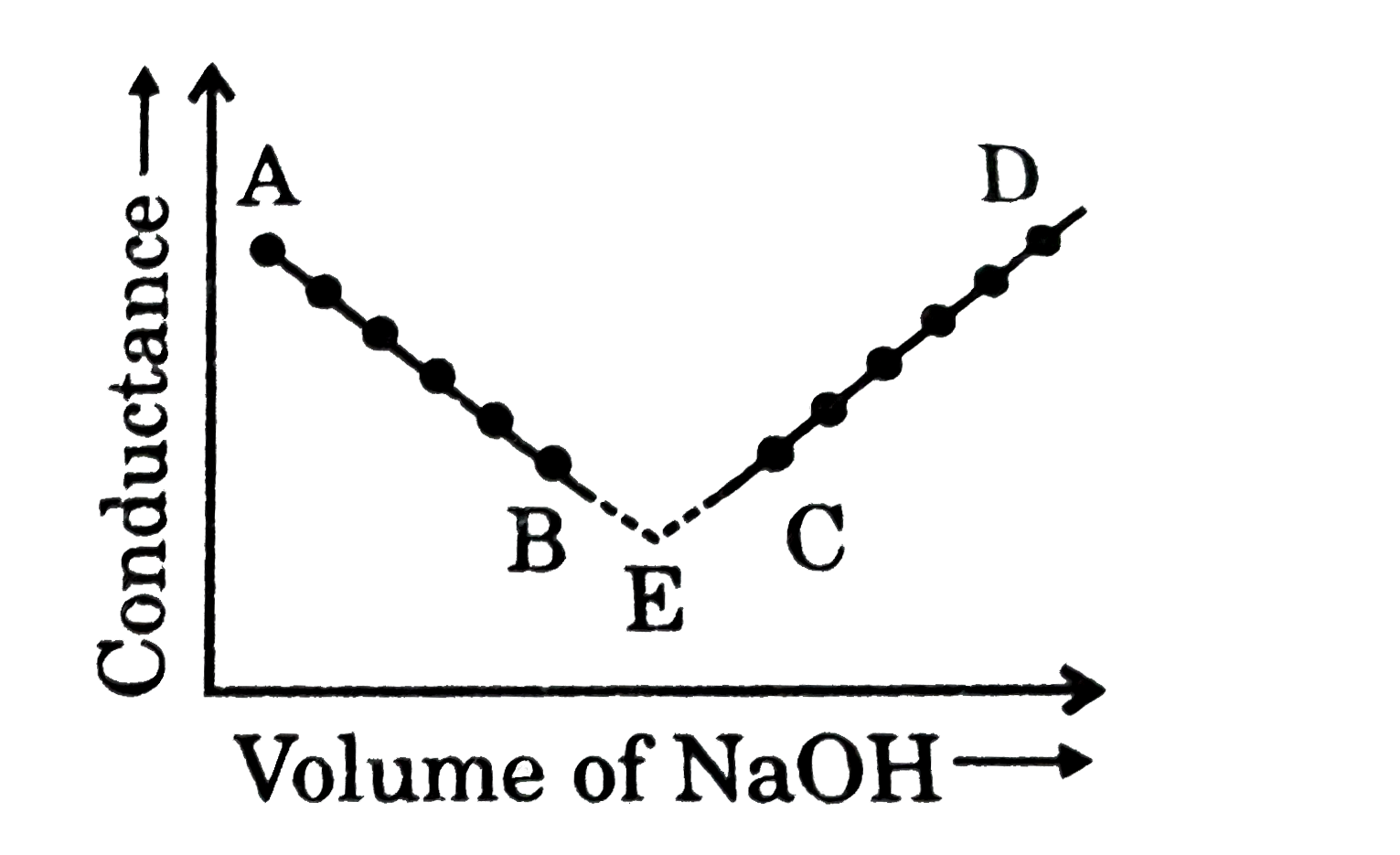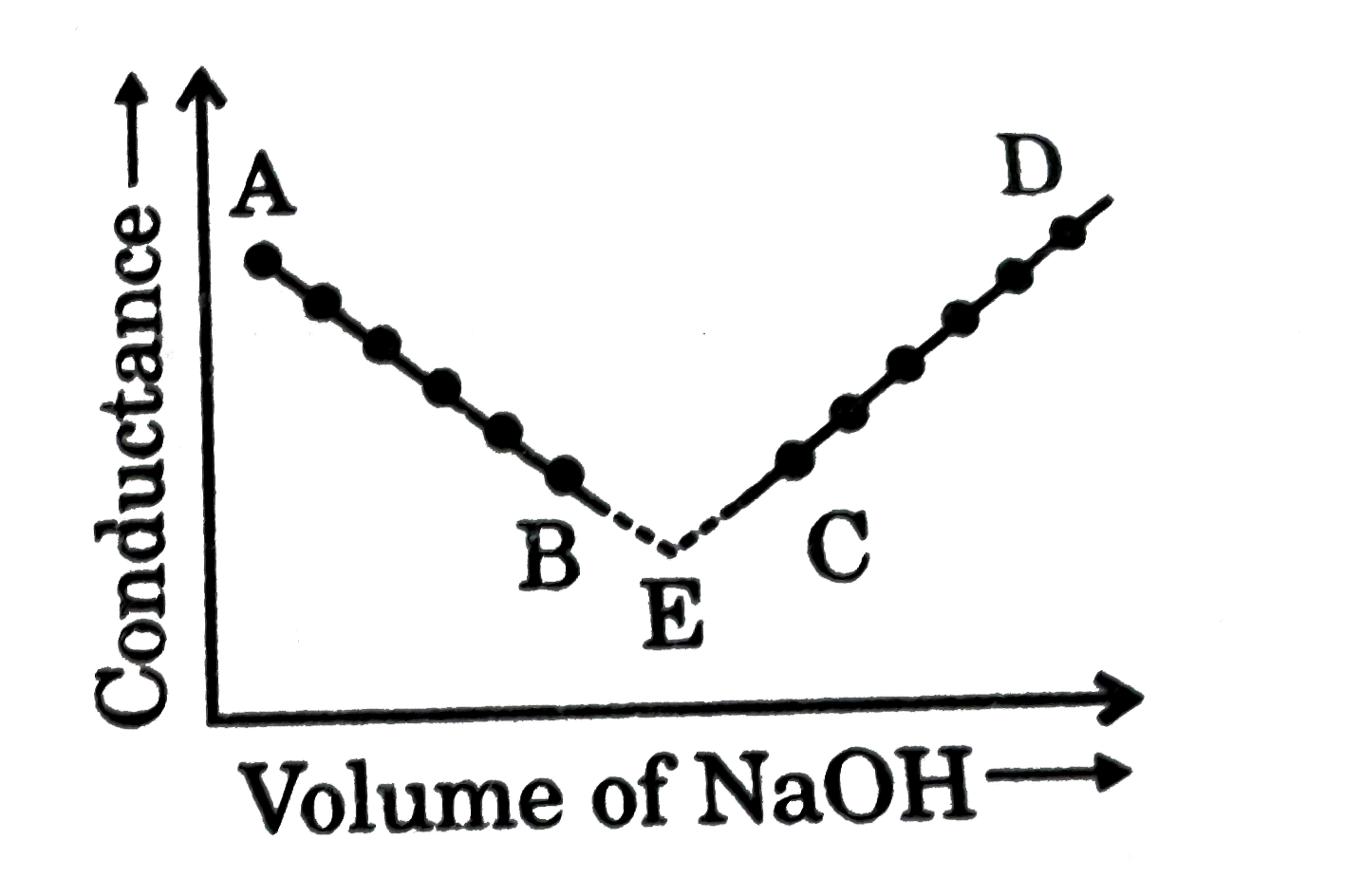A unicellular protist X, which has contractile vacuole to remove excess intracellular water, was placed in salt solution of increasing osmolarity. The given graph shows the rate of contraction of vacuole to pump out excess water against osmolarity of solution. Select the option that gives the correct explanation of the data.

In an isotonic solution there is no diffusion of water in or out of the X so the contraction rate is zero.
At higher osmolarity, more salt diffuses into X, therefore lower rates of contractions are required.
The rate of contraction increases as osmolarity decreases because amount of water entering X by osmosis increases.
The contractile vacuole is less efficient in solution of high osmolarity because of reduced respiration and less production of ATP.
The correct Answer is:C
Step by step video & image solution for A unicellular protist X, which has contractile vacuole to remove excess intracellular water, was placed in salt solution of increasing osmolarity. The given graph shows the rate of contraction of vacuole to pump out excess water against osmolarity of solution. Select the option that gives the correct explanation of the data. by Biology experts to help you in doubts & scoring excellent marks in Class 9 exams.
Updated on:21/07/2023Topper's Solved these Questions
- CELL - THE FUNDAMENTAL UNIT OF LIFE BOOK - SCIENCE OLYMPIAD FOUNDATION CHAPTER - CELL - THE FUNDAMENTAL UNIT OF LIFE EXERCISE - MULTIPLE CHOICE QUESTIONS (ACHIEVERS SECTION (HOTS))
5 Videos
- CLASS 9 SAMPLE PAPER FINAL 4BOOK - SCIENCE OLYMPIAD FOUNDATION CHAPTER - CLASS 9 SAMPLE PAPER FINAL 4EXERCISE - SCIENCE
2 Videos
Similar Questions
Pyrolusite, MnO2, is the main ore from which manganese is produced. The manganese content of the ore may be determined by reducing the MnO2 under acetic conditions to Mn2+ with the oxalate ion, C2O2−4, the oxalate ion being oxidised to carbon dioxide during the reaction. The analytical determination is carried out by adding a known excess volume of oxalate solution to a suspension of the pyrolusite and digesting the mixture on a hot water bath until all the MnO2 has been reduced. The excess, unreacted oxalate solution is then titrated with standardised potassium permanganate, KMnO4 solution after which the manganese content of the ore can be calculated.
A student prepared a standard solution of sodium oxalate by weighing 3.2 g of the dry anhydrous salt, dissolving it in distilled water and making the solution up to 500 mL. 25 mL of the oxalate solution required 24.76 mL of KMnO4 solution.
How many moles of C2O2−4 ions will be oxidised by 1 mole MnO−4 ?
View SolutionPyrolusite, MnO2, is the main ore from which manganese is produced. The manganese content of the ore may be determined by reducing the MnO2 under acetic conditions to Mn2+ with the oxalate ion, C2O2−4, the oxalate ion being oxidised to carbon dioxide during the reaction. The analytical determination is carried out by adding a known excess volume of oxalate solution to a suspension of the pyrolusite and digesting the mixture on a hot water bath until all the MnO2 has been reduced. The excess, unreacted oxalate solution is then titrated with standardised potassium permanganate, KMnO4 solution after which the manganese content of the ore can be calculated.
A student prepared a standard solution of sodium oxalate by weighing 3.2 g of the dry anhydrous salt, dissolving it in distilled water and making the solution up to 500 mL. 25 mL of the oxalate solution required 24.76 mL of KMnO4 solution.
What is the equivalent mass of MnO2 in the present titration ?
View Solution
Knowledge Check
Pyrolusite, MnO2, is the main ore from which manganese is produced. The manganese content of the ore may be determined by reducing the MnO2 under acetic conditions to Mn2+ with the oxalate ion, C2O2−4, the oxalate ion being oxidised to carbon dioxide during the reaction. The analytical determination is carried out by adding a known excess volume of oxalate solution to a suspension of the pyrolusite and digesting the mixture on a hot water bath until all the MnO2 has been reduced. The excess, unreacted oxalate solution is then titrated with standardised potassium permanganate, KMnO4 solution after which the manganese content of the ore can be calculated.
A student prepared a standard solution of sodium oxalate by weighing 3.2 g of the dry anhydrous salt, dissolving it in distilled water and making the solution up to 500 mL. 25 mL of the oxalate solution required 24.76 mL of KMnO4 solution.
What is the molarity of KMnO4 solution ?A0.04776B0.01929C0.038D0.028Pyrolusite, MnO2, is the main ore from which manganese is produced. The manganese content of the ore may be determined by reducing the MnO2 under acetic conditions to Mn2+ with the oxalate ion, C2O2−4, the oxalate ion being oxidised to carbon dioxide during the reaction. The analytical determination is carried out by adding a known excess volume of oxalate solution to a suspension of the pyrolusite and digesting the mixture on a hot water bath until all the MnO2 has been reduced. The excess, unreacted oxalate solution is then titrated with standardised potassium permanganate, KMnO4 solution after which the manganese content of the ore can be calculated.
A student prepared a standard solution of sodium oxalate by weighing 3.2 g of the dry anhydrous salt, dissolving it in distilled water and making the solution up to 500 mL. 25 mL of the oxalate solution required 24.76 mL of KMnO4 solution.
Role of KMnO4 in the given titration can be described as :Aoxidising agentBreducing agentCindicatorDoxidising agent and indicatorPyrolusite, MnO2, is the main ore from which manganese is produced. The manganese content of the ore may be determined by reducing the MnO2 under acetic conditions to Mn2+ with the oxalate ion, C2O2−4, the oxalate ion being oxidised to carbon dioxide during the reaction. The analytical determination is carried out by adding a known excess volume of oxalate solution to a suspension of the pyrolusite and digesting the mixture on a hot water bath until all the MnO2 has been reduced. The excess, unreacted oxalate solution is then titrated with standardised potassium permanganate, KMnO4 solution after which the manganese content of the ore can be calculated.
A student prepared a standard solution of sodium oxalate by weighing 3.2 g of the dry anhydrous salt, dissolving it in distilled water and making the solution up to 500 mL. 25 mL of the oxalate solution required 24.76 mL of KMnO4 solution.
Molarity of the sodium oxalate solution is ..A0.04776B0.07446C0.06447D0.07644
The principle on conductometric titration is based in the fact that during the titration, one of the ions is replaced by the other and invariably thses two ions differ in the ionic conductivity with the result that the conductivity of the solution varies during the course of the titration.Take,for example,the titration between strong acid, say HCl. and a strong base, say NaOH.Before NaOH is added the conuctance of HCl solution has a high value due ti the persence if highly hydrogen ions.As NaOH is added,H+ ions are the replaced by relatively slower moving Na+ ions.Consequently, the conductance of the solution decrease and this continues right upto the enuivalence point where the solution contains only NaCL.Beyond the equivalence point if more of NaOH is added, then the solution contains an excess of the fast moving OH− with the result that its as more of NaoH added, we plot the conductance value vs the amount of NaOH added we get curve of the type shown in figure.The descending portion AB represents the conductance before the equivalence point (solution cintains a mixture if acid HCl and the salt NaCL and the ascending portion CD represents the conductances after the equivalence point (solution contains the salt NaCL and the excess of NaOH). The point E which repersents only the minimum conductance is alkali and thus repersents the equivalence point.This point can, however, be obtained by the extrapoltion of the lines AB and CD and therefore one is not very particular in location this point experimentally as it is in the case of ordinary acid -base involving the acid base indicators

LET us take the specific exaanple of acetic acid being titration against NaOH.Before the addition the of alkali, the solution shows poor conductance due to feeble inization of acetic acid.Initially the addtion of alkali causes not only the replacement of H+ by Na+ but also suppresses the thus the conductance of the solution decrease in the begnning .But very soon the conductance starts increasing as addetion NaOH thus causing neutralizes the undissociated HAc to HAc with strong condutance eletroyte Na+Ac−.The increase in conducting OH− ions gtthe graph near the highly equivalence point actual equivalence point can as usual be ontained by the extrapoiation method
In all thses graphs it been assumed that the vloume change due addition of solution from burette in negligible heane vloume change of the sloution in beaker the conuctance of which is measured is almost constant throughout the measurement
If a 100 ml solution of 0.1 MHBr is titration using a very concentrated solution of NaOH then the conductivity (specific conductance0 of this solution at the equivalence wil be (assume volume change is negligible due addition of NaOH). Report your answer after mulitiplying it with 100 inSm−1
[Given : λ∘(Na+)=8×10−3Sm2mol−1,λ∘(Br−)=4×10−3Sm2mol−1]
View SolutionThe principle on conductometric titration is based in the fact that during the titration, one of the ions is replaced by the other and invariably thses two ions differ in the ionic conductivity with the result that the conductivity of the solution varies during the course of the titration.Take,for example,the titration between strong acid, say HCl. and a strong base, say NaOH.Before NaOH is added the conuctance of HCl solution has a high value due ti the persence if highly hydrogen ions.As NaOH is added,H+ ions are the replaced by relatively slower moving Na+ ions.Consequently, the conductance of the solution decrease and this continues right upto the enuivalence point where the solution contains only NaCL.Beyond the equivalence point if more of NaOH is added, then the solution contains an excess of the fast moving OH− with the result that its as more of NaoH added, we plot the conductance value vs the amount of NaOH added we get curve of the type shown in figure.The descending portion AB represents the conductance before the equivalence point (solution cintains a mixture if acid HCl and the salt NaCL and the ascending portion CD represents the conductances after the equivalence point (solution contains the salt NaCL and the excess of NaOH). The point E which repersents only the minimum conductance is alkali and thus repersents the equivalence point.This point can, however, be obtained by the extrapoltion of the lines AB and CD and therefore one is not very particular in location this point experimentally as it is in the case of ordinary acid -base involving the acid base indicators

LET us take the specific exaanple of acetic acid being titration against NaOH.Before the addition the of alkali, the solution shows poor conductance due to feeble inization of acetic acid.Initially the addtion of alkali causes not only the replacement of H+ by Na+ but also suppresses the thus the conductance of the solution decrease in the begnning .But very soon the conductance starts increasing as addetion NaOH thus causing neutralizes the undissociated HAc to HAc with strong condutance eletroyte Na+Ac−.The increase in conducting OH− ions gtthe graph near the highly equivalence point actual equivalence point can as usual be ontained by the extrapoiation method
In all thses graphs it been assumed that the vloume change due addition of solution from burette in negligible heane vloume change of the sloution in beaker the conuctance of which is measured is almost constant throughout the measurement
The most appropriate titration curve ibtained when a mixture of a strong acid (say HCl) and a weak acid (sayCH3COOH0 is titration with (say NaOH) will be
View SolutionThe principle on conductometric titration is based in the fact that during the titration, one of the ions is replaced by the other and invariably thses two ions differ in the ionic conductivity with the result that the conductivity of the solution varies during the course of the titration.Take,for example,the titration between strong acid, say HCl. and a strong base, say NaOH.Before NaOH is added the conuctance of HCl solution has a high value due ti the persence if highly hydrogen ions.As NaOH is added,H+ ions are the replaced by relatively slower moving Na+ ions.Consequently, the conductance of the solution decrease and this continues right upto the enuivalence point where the solution contains only NaCL.Beyond the equivalence point if more of NaOH is added, then the solution contains an excess of the fast moving OH− with the result that its as more of NaoH added, we plot the conductance value vs the amount of NaOH added we get curve of the type shown in figure.The descending portion AB represents the conductance before the equivalence point (solution cintains a mixture if acid HCl and the salt NaCL and the ascending portion CD represents the conductances after the equivalence point (solution contains the salt NaCL and the excess of NaOH). The point E which repersents only the minimum conductance is alkali and thus repersents the equivalence point.This point can, however, be obtained by the extrapoltion of the lines AB and CD and therefore one is not very particular in location this point experimentally as it is in the case of ordinary acid -base involving the acid base indicators

LET us take the specific exaanple of acetic acid being titration against NaOH.Before the addition the of alkali, the solution shows poor conductance due to feeble inization of acetic acid.Initially the addtion of alkali causes not only the replacement of H+ by Na+ but also suppresses the thus the conductance of the solution decrease in the begnning .But very soon the conductance starts increasing as addetion NaOH thus causing neutralizes the undissociated HAc to HAc with strong condutance eletroyte Na+Ac−.The increase in conducting OH− ions gtthe graph near the highly equivalence point actual equivalence point can as usual be ontained by the extrapoiation method
In all thses graphs it been assumed that the vloume change due addition of solution from burette in negligible heane vloume change of the sloution in beaker the conuctance of which is measured is almost constant throughout the measurement
the nature of curve obtained for the titration between weak acid vs strong base as described in the above will be
View SolutionRead the following passage and answer the questions given after it.
Flamingoes come to Kutch from various parts of the world every year to breed. For centuries, the region had been a haven for the migratory birds. Today, Flamingo City, an island in the middle of the Rann of Kutch, known the world over as one of the biggest breeding grounds of the Greater Flamingo, is strewn with bodies of hundreds of flamingo chicks. The parents of these chicks have fled from the island due to lack of food. Zooplanktons, algae and the small fish that these birds survive on are dying due to a sudden increase in the salinity of the Rann waters.
Flamingoes need salt-encrusted, damp mud to build nests. The place where they build their nests has to be inaccessible to predatory cats and birds. It should also have sufficient food. Faced with starvation, flamingoes have fled from the island leaving their chicks to fend for themselves. Till date around a thousand flamingoes have died.
Maharaj Kumarshi Himmatsinghji, a member of the royal family of Kutch and an expert on the birds of Kutch, traces the problem of increased salinity in the Rann waters to the construction of dams on rivers that flow into the region. He emphasizes that effort should be made to ensure that, at least, some water flows into the Rann. In fact over the years, the number of flamingoes coming to the island have decreased because of the change in salinity of the Rann water. In 1945, Salim Ali, the late ornithologist, had found 5 lakh birds on the island. Since then, the number has not gone above 2.2 lakh. However, the studies carried out on the Flamingo City so far cannot be taken as 100 percent accurate because very few ornithologists have conducted regular studies on flamingoes in the area. The reason: the terrain is so inhospitable that it is simply not possible to visit the place every year. Says Himmatsinghji, "The ringing of flamingoes is mandatory to conduct accurate and long term studies on the birds. Unfortunately, ever since Flamingo City was discovered in 1893, not a single bird has been ringed. No wonder questions like from where these birds migrate every year remain only partially answered.
Why was Rann of Kutch considered a ‘haven’ for flamingoes?
a. It had salt-encrusted damp mud.
b. It had highly saline water.
c. Algae, zooplankton and small fish were in plenty.
d. It was safe from predators.
Which are the correct factors?
View SolutionIn the following passage, some of the words have been left out. Read the passage carefully and select the correct answer for the given blank out of the four alternatives.
We all experience and understand that the current times are not very safe in general. One has to be on a ______ guard against unfriendly elements. As we move towards the Golden Age on the planet, a ______ of negative forces have surfaced. It is by bringing them to the surface that the divine forces can put them to an end. It is like the ______ that surfaces when we boil sugar in water, which is ready to be removed from the top so that what we get is sugar solution ______ of all the impurities. This process of cleansing our planet by the universal forces, however, will take some time. Till then, we have to ______ these negativities around us.
sugar solution ______ of all the
View Solution
